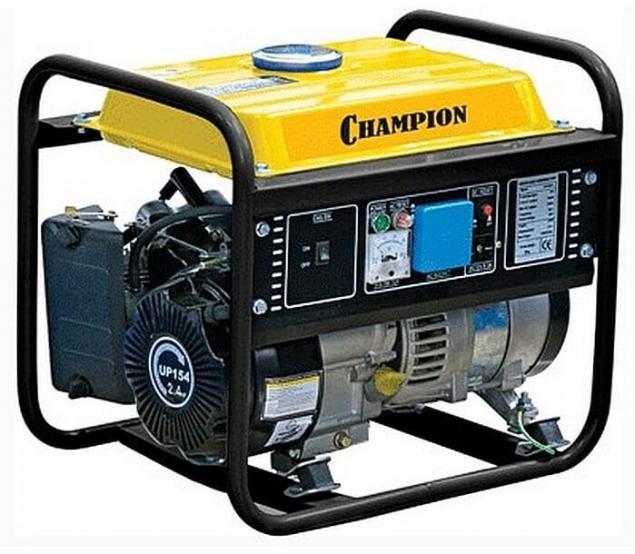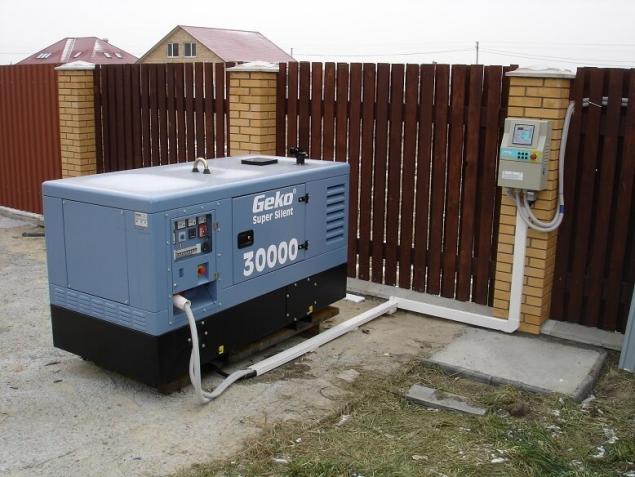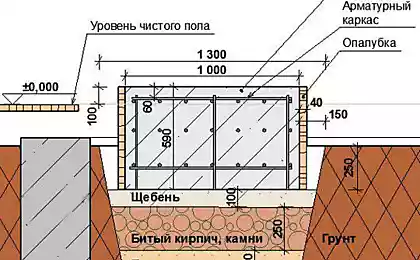656
Stand-alone, cost-effective: a generator for building and garden
These generators use a variety of fuels and are intended for different tasks. There are generators equipped with petrol and diesel engines as well as engines running on LPG, including welding and inverter.

Petrol (with two- and four-stroke engines) are low cost and economical fuel consumption. This mainly refers to the inverter generator. There are models of how to connect low-power (up to 1 kW) devices, and to ensure full country-house electricity (up to 15 kW). The diesel generator, compared with gasoline, more economical, and can operate for a long time without refueling. A number of models equipped with the oil level sensor with automatic engine stop system and automatic overload protection system.

How to choose a generator?
Before choosing a generator, you must answer the following questions. What kind of power is required for your customers, what kind of load you are connected to it, in what kind of fuel it should work, how often and for a long time it will be used - and, finally, whether you move it during operation (need whether mobile or stationary unit )? Then you can focus on selecting the additional features (high quality output voltage presence electric starting engine, soundproof, power sockets or terminals, hour meter, as well as the ability to automatically turn on).
Selecting the type of current
The most frequently requires a source of autonomous power supply single-phase consumers with active (incandescent lamps, electric, etc.) and reactive (electric) load.
sometimes it takes a three-phase generator to provide electricity to the equipment and construction of special purpose. The design of the three-phase generator provides the possibility of single-phase output, and you can not use more than 1/3 of the nominal three-phase power.
Also, as a rule, all generators installed for dispensing outlet 12 volts DC.
Determination of the generator rated power
Before choosing a generator need to make a preliminary calculation of power consumption. To do this, you must determine which home users and how often they will be used, their nominal full capacity and inrush currents. At this stage, it is advisable to analyze the simultaneous use of different consumers and divide them into groups. Besides it is necessary to lay the power supply (generator reserve power ratio), which will allow for possible errors in the original data in the calculation of energy consumption or perspectives (usually selected in the range 10-25%).
Note. Rated apparent power measured in VA (volt-amps), the consumer is taken from the passport or plates placed on the device. Normally indicate "active" power consumption and cos. To calculate the total power necessary to specify the partition on the active power cosφ.
Example: in the passport for electric Unknown P = 600 W, cos = 0, 8. When calculating the total power used by P / cosφdreli / cosφgeneratora. Since cos Champion single-phase generator is equal to 1, then complete an electric power is calculated as 600W / 0 8/1 = 750 watts. This amount of power is used in subsequent calculations. For three-phase consumers cosφ generator is 0, 8. Therefore, the total capacity of "three-phase" drill will be equal to 600W / 0, 8/0, 8 = 937, 5 watts.
Note. At the moment when the engine consumes a current several times larger than in the nominal operating mode. The ratio of current when starting the engine to the rated current is called coefficient of inrush current.
Generator power calculation can be performed using the formula:
P =

where
n- number of connected consumers;
Ksn- starting current ratio of n-th user;
Nn- full power of n-th user (based on cosφ);
R- power reserve coefficient generator (1, 1 - 1, 25).
Consider the example of a single-phase generator for calculating the required power for the power of a small household.
Electricity Consumers
n the consumer the full power of the consumer (including cos), W starting current ratio Ksn use frequency band
consumption 1 800 1 Electric Often 1
TV 2 500 1 5 parts, 1
3 300 3 Refrigerator Constantly, 1, 2, 3
4 Incandescent 300 1 Often 1
5 Garden Pump 600 3 Rarely 2
6 Electric lawnmower 1000 2 Rarely, 2
7 Electric Chain Saw 2000 2 Very rarely 3
Choose a value of power reserve coefficient R = 1, 1, and calculations for the case when all consumers will be used at the same time. This is the case when a large family, grandfather watching TV, the father and son work, and his mother preparing dinner.
P = 1, * 1 (800 * 500 * 1 + 1, 5 + 3 + 300 * 300 * 600 * 1 + 3 + 2 + 1000 * 2000 * 2) = 11605 W
And also for groups of simultaneous use of consumers. In view of the fact that we have taken as a fridge is constantly working consumer, such groups will be three.
P1 = 1, * 1 (800 * 500 * 1 + 1, 5 + 300 * 300 * 3 + 1) = 3025 W - evening variant, the main work on the farm ended
. P2 = 1, * 1 (300 * 600 * 3 + 3 + 1000 * 2) = 5170 watts - a morning option is mowing and watering the garden plot
. P3 = 1, * 1 (300 * 3 * 2 + 2000) = 5390 watts - a very rare case when you need to cut it on the wood, let the old apple tree
. Ideally, choose a generator that will provide all the needs at once (VA 11605), but the price for it "bites", and such cases when all consumers switched on at the same time, there are times in the year.
Therefore, we can focus on the second option, ie, select the maximum power consumption while using the group (3025, 5170, 5390 W). In this case, it suffices to choose a generator with a rated power of 5 kW 5-6, but always remember that you can connect to it. This is completely different money compared to the first embodiment.
Note. You can try to save again. To do this, you can limit the power deliberately not to watch television when preparing food (it is said, from that becomes tastier) or during irrigation works not mow the grass, which is logical, based on the electrical equipment
. There is another way to save on the cost of the generator. This "sin" are usually people close to the electrical and operating generators. Based on the fact that the starting currents in force for significant periods of time (of a second), the simultaneous operation of consumers may be considered as an unlikely event and some of the inrush currents can be neglected or underestimate their importance. In this case, there is a risk of overloading the generator, and although the generators usually have a power reserve (maximum short-term power output of not less than 10% of the nominal) and automatic shutdown, this can lead to reduced service life and / or damage to the generator.
Choosing the type of fuel
Gasoline engines. Compared with diesel engines are started easily even at low temperatures, it is cheaper.
Engines gasoline generator sets are 2- and 4-stroke:
Two-stroke used for low-power and compact generator sets. MTBF - not less than 500 hours. Continuous daily work - no more than 2 hours a day. Suitable for country trips to the nature or for a small suburban area.
Four different power and greater efficiency in comparison with the two-stroke, professional models can continuously work about 8-12 hours a day. They have a high margin of safety, MTBF - not less than 2000 hours
. There are models of generators, engines which can be used in addition to gasoline LPG propane or propane-butane.
Diesel engines have a greater lifespan than gasoline, reduced fuel consumption, a longer period of failures and higher initial cost.
The issue of transportation
Even household generators of low power (up to 3kW) have a decent enough weight to the problem of transporting them from place to place alone has become insoluble. Therefore, if you want a regular movement of the generator, you need to attend to at the stage of the selection so that it was equipped with a conveyor system. Such a system can be mounted on a frame or supplied separately as a set of wheels, arms and legs.
Extra features and options
High quality output voltage. In some cases, a source of high-quality electricity, which provides stable voltage and frequency, for example, to supply certain medical devices, professional and office equipment. In this case, it is recommended to pay attention to inverter generators that produce so-called "pure sine wave».
Sensor low oil level (oil pressure gauge). Outputs a signal to turn off the motor generator when there is no oil sump or its level (pressure) is below the required. Is technically more generator safety function.
voltage automatic control unit (AVR). This adjusts the output voltage when changing the engine speed. It prevents voltage fluctuation, especially with frequent connecting / disconnecting users.
Electric start. Due to the high compression of almost all equipped with electric start diesel generators, gasoline generators with capacity of more than 5 kW rated power also have electrical start. This is a very convenient option to start the generator to women, the elderly and disabled.
Soundproof. The generator is a source of increased noise. Completely get rid of it will not be possible, but the application of the soundproofing housing will significantly reduce its.
Power sockets (terminals). Sometimes it is necessary to provide electricity to the consumer, which requires a significant portion of the generator rated power. In some cases (power consumption of more than 3, 5 kW) standard outlet 16A is not enough. Therefore, preference should be given to models of generators that have sockets 32A or special terminals for connection.
Hour meter. Maintenance schedule generator is attached to the time worked for the generator, and the timeliness of the operation as a whole provides its high service life.
Automatic activation. This function is useful when you need uninterrupted power supply to the object (home, office, the individual consumer). When disappears (falls), the voltage in the urban network should automatically turn on the emergency source of power. To do this, the generators provided equipment automatic start - unit ATS (automatic transfer switch - dim-reserve) and an air servo valve carburetor (gasoline engine) or the control unit high pressure fuel pump (fuel pump) for diesel engines.

Petrol (with two- and four-stroke engines) are low cost and economical fuel consumption. This mainly refers to the inverter generator. There are models of how to connect low-power (up to 1 kW) devices, and to ensure full country-house electricity (up to 15 kW). The diesel generator, compared with gasoline, more economical, and can operate for a long time without refueling. A number of models equipped with the oil level sensor with automatic engine stop system and automatic overload protection system.

How to choose a generator?
Before choosing a generator, you must answer the following questions. What kind of power is required for your customers, what kind of load you are connected to it, in what kind of fuel it should work, how often and for a long time it will be used - and, finally, whether you move it during operation (need whether mobile or stationary unit )? Then you can focus on selecting the additional features (high quality output voltage presence electric starting engine, soundproof, power sockets or terminals, hour meter, as well as the ability to automatically turn on).
Selecting the type of current
The most frequently requires a source of autonomous power supply single-phase consumers with active (incandescent lamps, electric, etc.) and reactive (electric) load.
sometimes it takes a three-phase generator to provide electricity to the equipment and construction of special purpose. The design of the three-phase generator provides the possibility of single-phase output, and you can not use more than 1/3 of the nominal three-phase power.
Also, as a rule, all generators installed for dispensing outlet 12 volts DC.
Determination of the generator rated power
Before choosing a generator need to make a preliminary calculation of power consumption. To do this, you must determine which home users and how often they will be used, their nominal full capacity and inrush currents. At this stage, it is advisable to analyze the simultaneous use of different consumers and divide them into groups. Besides it is necessary to lay the power supply (generator reserve power ratio), which will allow for possible errors in the original data in the calculation of energy consumption or perspectives (usually selected in the range 10-25%).
Note. Rated apparent power measured in VA (volt-amps), the consumer is taken from the passport or plates placed on the device. Normally indicate "active" power consumption and cos. To calculate the total power necessary to specify the partition on the active power cosφ.
Example: in the passport for electric Unknown P = 600 W, cos = 0, 8. When calculating the total power used by P / cosφdreli / cosφgeneratora. Since cos Champion single-phase generator is equal to 1, then complete an electric power is calculated as 600W / 0 8/1 = 750 watts. This amount of power is used in subsequent calculations. For three-phase consumers cosφ generator is 0, 8. Therefore, the total capacity of "three-phase" drill will be equal to 600W / 0, 8/0, 8 = 937, 5 watts.
Note. At the moment when the engine consumes a current several times larger than in the nominal operating mode. The ratio of current when starting the engine to the rated current is called coefficient of inrush current.
Generator power calculation can be performed using the formula:
P =

where
n- number of connected consumers;
Ksn- starting current ratio of n-th user;
Nn- full power of n-th user (based on cosφ);
R- power reserve coefficient generator (1, 1 - 1, 25).
Consider the example of a single-phase generator for calculating the required power for the power of a small household.
Electricity Consumers
n the consumer the full power of the consumer (including cos), W starting current ratio Ksn use frequency band
consumption 1 800 1 Electric Often 1
TV 2 500 1 5 parts, 1
3 300 3 Refrigerator Constantly, 1, 2, 3
4 Incandescent 300 1 Often 1
5 Garden Pump 600 3 Rarely 2
6 Electric lawnmower 1000 2 Rarely, 2
7 Electric Chain Saw 2000 2 Very rarely 3
Choose a value of power reserve coefficient R = 1, 1, and calculations for the case when all consumers will be used at the same time. This is the case when a large family, grandfather watching TV, the father and son work, and his mother preparing dinner.
P = 1, * 1 (800 * 500 * 1 + 1, 5 + 3 + 300 * 300 * 600 * 1 + 3 + 2 + 1000 * 2000 * 2) = 11605 W
And also for groups of simultaneous use of consumers. In view of the fact that we have taken as a fridge is constantly working consumer, such groups will be three.
P1 = 1, * 1 (800 * 500 * 1 + 1, 5 + 300 * 300 * 3 + 1) = 3025 W - evening variant, the main work on the farm ended
. P2 = 1, * 1 (300 * 600 * 3 + 3 + 1000 * 2) = 5170 watts - a morning option is mowing and watering the garden plot
. P3 = 1, * 1 (300 * 3 * 2 + 2000) = 5390 watts - a very rare case when you need to cut it on the wood, let the old apple tree
. Ideally, choose a generator that will provide all the needs at once (VA 11605), but the price for it "bites", and such cases when all consumers switched on at the same time, there are times in the year.
Therefore, we can focus on the second option, ie, select the maximum power consumption while using the group (3025, 5170, 5390 W). In this case, it suffices to choose a generator with a rated power of 5 kW 5-6, but always remember that you can connect to it. This is completely different money compared to the first embodiment.
Note. You can try to save again. To do this, you can limit the power deliberately not to watch television when preparing food (it is said, from that becomes tastier) or during irrigation works not mow the grass, which is logical, based on the electrical equipment
. There is another way to save on the cost of the generator. This "sin" are usually people close to the electrical and operating generators. Based on the fact that the starting currents in force for significant periods of time (of a second), the simultaneous operation of consumers may be considered as an unlikely event and some of the inrush currents can be neglected or underestimate their importance. In this case, there is a risk of overloading the generator, and although the generators usually have a power reserve (maximum short-term power output of not less than 10% of the nominal) and automatic shutdown, this can lead to reduced service life and / or damage to the generator.
Choosing the type of fuel
Gasoline engines. Compared with diesel engines are started easily even at low temperatures, it is cheaper.
Engines gasoline generator sets are 2- and 4-stroke:
Two-stroke used for low-power and compact generator sets. MTBF - not less than 500 hours. Continuous daily work - no more than 2 hours a day. Suitable for country trips to the nature or for a small suburban area.
Four different power and greater efficiency in comparison with the two-stroke, professional models can continuously work about 8-12 hours a day. They have a high margin of safety, MTBF - not less than 2000 hours
. There are models of generators, engines which can be used in addition to gasoline LPG propane or propane-butane.
Diesel engines have a greater lifespan than gasoline, reduced fuel consumption, a longer period of failures and higher initial cost.
The issue of transportation
Even household generators of low power (up to 3kW) have a decent enough weight to the problem of transporting them from place to place alone has become insoluble. Therefore, if you want a regular movement of the generator, you need to attend to at the stage of the selection so that it was equipped with a conveyor system. Such a system can be mounted on a frame or supplied separately as a set of wheels, arms and legs.
Extra features and options
High quality output voltage. In some cases, a source of high-quality electricity, which provides stable voltage and frequency, for example, to supply certain medical devices, professional and office equipment. In this case, it is recommended to pay attention to inverter generators that produce so-called "pure sine wave».
Sensor low oil level (oil pressure gauge). Outputs a signal to turn off the motor generator when there is no oil sump or its level (pressure) is below the required. Is technically more generator safety function.
voltage automatic control unit (AVR). This adjusts the output voltage when changing the engine speed. It prevents voltage fluctuation, especially with frequent connecting / disconnecting users.
Electric start. Due to the high compression of almost all equipped with electric start diesel generators, gasoline generators with capacity of more than 5 kW rated power also have electrical start. This is a very convenient option to start the generator to women, the elderly and disabled.
Soundproof. The generator is a source of increased noise. Completely get rid of it will not be possible, but the application of the soundproofing housing will significantly reduce its.
Power sockets (terminals). Sometimes it is necessary to provide electricity to the consumer, which requires a significant portion of the generator rated power. In some cases (power consumption of more than 3, 5 kW) standard outlet 16A is not enough. Therefore, preference should be given to models of generators that have sockets 32A or special terminals for connection.
Hour meter. Maintenance schedule generator is attached to the time worked for the generator, and the timeliness of the operation as a whole provides its high service life.
Automatic activation. This function is useful when you need uninterrupted power supply to the object (home, office, the individual consumer). When disappears (falls), the voltage in the urban network should automatically turn on the emergency source of power. To do this, the generators provided equipment automatic start - unit ATS (automatic transfer switch - dim-reserve) and an air servo valve carburetor (gasoline engine) or the control unit high pressure fuel pump (fuel pump) for diesel engines.























